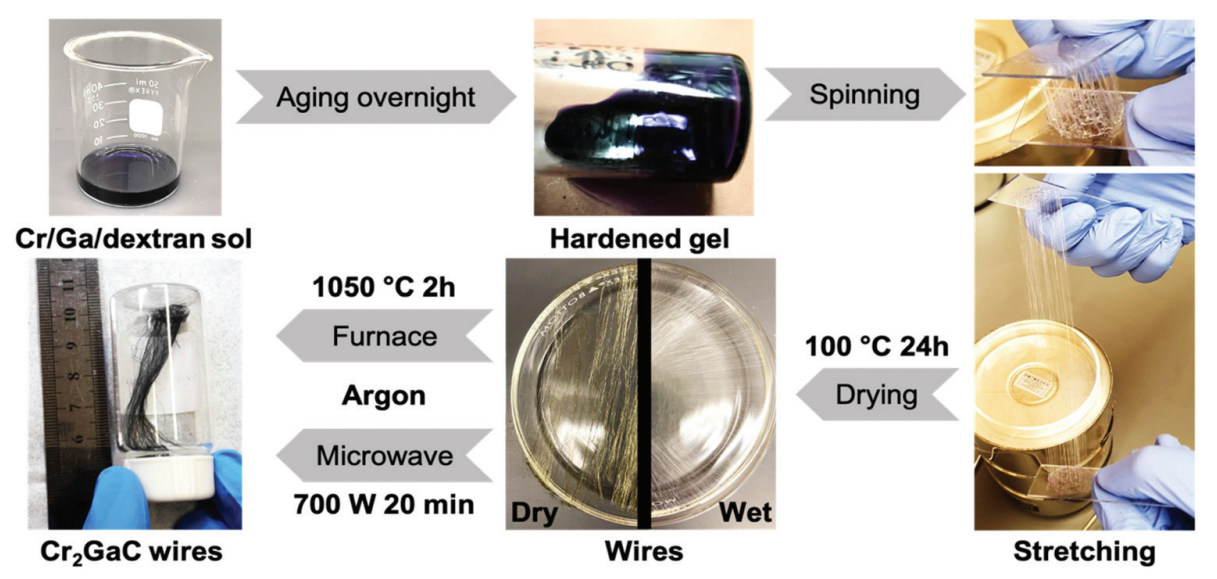Background
MAX phases are ternary carbides and nitrides with unique combinations of ceramic properties (e.g., resistance to high temperature, fatigue, and damage) and metallic properties (e.g., high electrical and thermal conductivity). They can be used, for example, as coatings for electronics operating under extreme conditions. Synthesis of MAX phases is typically accomplished by traditional solid-state methods, such as hot isostatic pressing, spark plasma sintering, or simple high-temperature furnace techniques. While these methods are well established, the final product's shape is difficult to control because the use of elemental or binary carbides/nitrides/intermetallics as reactants only allow for powder or pelletized reactant mixtures. On the other hand, the sol-gel approach involves dissolvable metal salts/alkoxides that are transformed and trapped in a gel using a variety of chelating and gel-forming agents. The obtained gel is generally malleable, allowing for shapes otherwise not attainable.
Invention Description
Researchers at Arizona State University have developed a method to synthesize MAX phase Cr2GaC in a micron-sized wire shape that is not achievable through traditional methods. Using sol-gel chemistry and both non-conventional microwave and conventional thermal heating techniques, this approach introduces a scalable route for producing 1D Cr2GaC MAX wires that can be formed into a variety of shapes. Additionally, doping of the microwires with halides such as iodine and bromine revealed a conductivity boost of 200% as well as a corresponding time-dependent decrease, which can potentially be exploited for chemiresistive halogen gas sensor applications.

Fig. 1: Schematic illustrating the process of preparing Cr2GaC microwires from gel precursor (top left) to spun wires (right).
Potential Applications
Durable conductive microwires for:
• Electronics and optoelectronics
• Quantum technology
• Chemiresistive halogen gas sensors
Benefits and Advantages
• Allows fabricated MAX phase wires to be easily shaped as desired
• Does not require high-end printers or expensive materials
• Easily scalable for large-volume, potentially continuous production
Related Publication: The synthesis and electrical transport properties of carbon/Cr2GaC MAX phase composite microwires
Research Homepage of Professor Christina Birkel